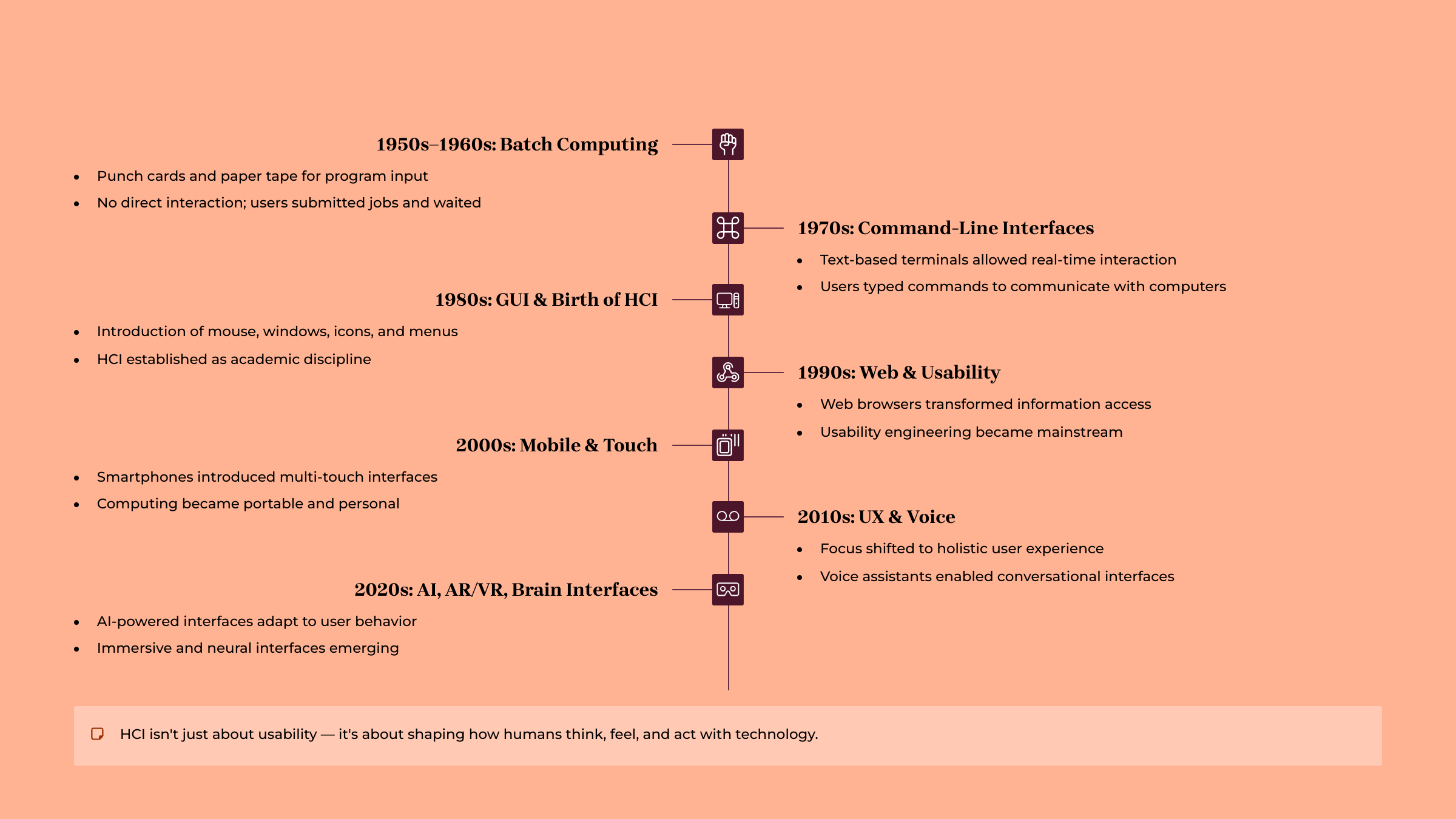From Punch Cards to Brain Interfaces: The Evolution of HCI
Human-Computer Interaction (HCI) is one of those fields that quietly shapes how we live, work, and create. It’s not just about usability or design, it’s about the evolving relationship between people and machines.
This timeline was created to trace that evolution. It’s a quick look at how far we’ve come, and a reminder of the questions we need to keep asking as technology grows more intelligent and intimate.
A Short History of HCI
1950s–1960s: Batch Computing
In the early days, there was no real “interaction.” Users submitted jobs using punch cards or paper tape and waited for results. The computer was a black box—distant, powerful, and inaccessible.
1970s: Command-Line Interfaces
Terminals introduced the ability to engage with machines in real time. Users typed commands to interact, marking the start of direct engagement with software.
1980s: GUI and the Birth of HCI
This was a turning point. The introduction of the mouse, windows, icons, and menus made computers visual, intuitive, and more human-centered. Around this time, HCI also emerged as a formal academic discipline.
1990s: Web and Usability
The rise of the World Wide Web changed how we accessed and consumed information. Usability became a mainstream concern, as the user base expanded beyond specialists to the general public.
2000s: Mobile and Touch
Computing went personal and portable. Smartphones brought multi-touch interfaces into daily life. The way people expected to engage with technology began to shift fundamentally.
2010s: UX and Voice
The conversation turned from interfaces to experiences. UX design became an established profession. Voice assistants like Siri and Alexa began to change how we think about input altogether.
The Future: Toward Invisible UX
The next frontier isn’t more UI—it’s less. As systems become more contextual, predictive, and embodied in our environments, the most powerful user experiences may be the ones we barely notice. Think ambient computing, emotion-aware systems, brain-to-device signaling, and spatial interfaces that feel more like conversation than interaction.
In this world, HCI won’t just be about creating screens or workflows, it will be about crafting presence, trust, and seamless coexistence between humans and machines. The interface dissolves. What remains is the experience.
Why This Matters
The history of HCI is really a history of how humans extend their capabilities through machines. Each shift, from batch jobs to predictive AI, brings new opportunities and new responsibilities. It’s no longer just about building usable systems. It’s about asking: how do we shape technology that understands, empowers, and respects the people who use it?
If you’re curious where we’re going next, it helps to understand where we’ve been.

